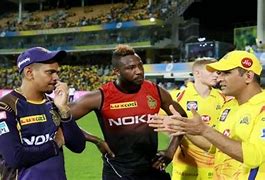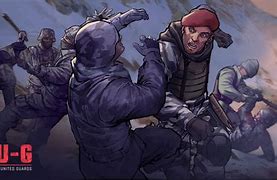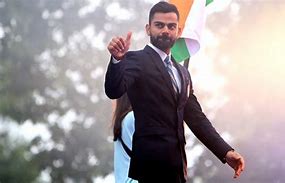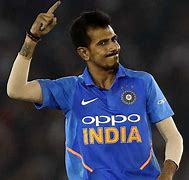National
INDIA AND ITS NEIGHBOURS : A BIRD’S – EYE VIEW

 Indians were witness to a grand show when Heads of all SAARC Nations assembled in New Delhi as part of the swearing-in ceremony of the newly elected Prime Minister Narendra Modi. Message was abundantly clear : The just formed government backed by a sweeping majority had embarked upon a policy of maintaining amicable relations with its neighbours indirectly strengthening South Asia and making it an area to reckon with. Almost two years have passed since then and it is worthwhile to analyse the turn of events.
Indians were witness to a grand show when Heads of all SAARC Nations assembled in New Delhi as part of the swearing-in ceremony of the newly elected Prime Minister Narendra Modi. Message was abundantly clear : The just formed government backed by a sweeping majority had embarked upon a policy of maintaining amicable relations with its neighbours indirectly strengthening South Asia and making it an area to reckon with. Almost two years have passed since then and it is worthwhile to analyse the turn of events.
- Relations with Bangladesh
Bangladesh, as we all know was carved out of East Pakistan and liberated in 1971 with the chivalrous efforts of Indian soldiers in a battle with Pakistan. Since then overall relations were more or less smooth interrupted with Bickerings and Quarells, with bilateral visits, aid in times of need (floods etc.), mutual trade agreements, sports events and so on. But Boundary dispute had constantly remained an unsettled issue. Insurgency continued mainly due to an undemarcked boundary, poverty, crime, smuggling and the presence of residential enclaves.
PM Modi visited Bangladesh on a two day trip and signed a historic Land Boundary agreement with his counterpart sheikh Hasina Wazid and likened it to the ‘Fall of the Berlin Wall’ in South East Asia.
- It undoes a damaging legacy of Partition.
- It settles India’s 4096 km long land border with Bangladesh – fifth largest in the world
- Confers citizenship rights on enclave residents.
- It settles the maritime boundary with Bangladesh.
- Modi has extended $2 billion line of credit.
This agreement, ratified by the Indian Parliament as the 100th constitution Amendment is certain to have far reaching consequences.
- For a country with three undemarcated borders since 1947 it is a welcome step.
- Transit through Bangladesh will help India bring its north-east closer and resolve some of the regional problems.
- Bangladesh gains access through India to markets in Bhutan and Nepal.
- Indian ships at present have to follow the absurd route of travelling to Singapore to offload cargo for Bangladesh, they can henceforth use Bangladesh’s Chittagong and Mongla ports.
- Bangladesh will set up two SEZ’s for Indian industry
- Opening up road rail links through Bangladesh (Kolkata – Dhaka – Agartala Bus Service) and (Guwahati – Shillong – Dhaka Bus Service) will bring North East closer to India and boost development.
- With a fillip to business and commerce, once the northeast economy picks up, it will increase stakes in regional peace, degrading the militant’s support base.
- With Modi making West Bengal the lynchpin of New Delhi’s “Act East Policy” Bangladesh automatically becomes India’s gateway to South East Asia – which will boost West Bengal’s economy.
- BBIN – Road connecting Bangladesh, Bhutan, India and Nepal – could be India’s response to China’s Silk Route Economic Belt.
If India has excess resources, Bangladesh has ezxcess labour force who can be pressed into service after giving work visas. Transfer of enclaves between the two countries took place on 30 July 2015 and citizenship granted. Prospects are good ; it is time to wait and watch what the future holds for this area. But certainly a long time mistake has been rectified, India transferred 111 enclaves with an area of about 17160 acres to Bangladesh. Bangladesh transferred 51 enclaves ( area of about 7110 acres to India)
- Relations with Sri Lanka
We greatly value our relationship with Srilanka which is based upon shared historical, cultural, ethnic and civilizational ties and extensive people interaction. Srilanka finds mention in our epic Ramayana. As member of SAARC, we have mostly had a relationship of cooperation esp. in trade. Srilanka is one the largest trade partner in South Asia with trade reaching nearly $5bn dollars. In response to the Srilankan government’s call, the then Rajiv Gandhi Government had sent IPKF to combat the menace of LTTE in Srilanka. Though the operation was left incomplete after 3 years , we had to bear the brunt of LTTE’s vendetta in the form of ex-PM Rajiv Gandhi’s assasination. India has adopted a multipronged approach since the liquidation of the LTTE. India misses no opportunity in impressing the Srilankan govt. to abide by its promise of devolution of power.
India reassures the Srilankan Tamils that it will make all out efforts to ensure the 13th amendment is not diluted and equality, justice and self respect is granted to one and all.India continues to invest into the reconstruction of Northern Srilanka.
India has partnered with Srilanka in projects and programmes for reconstruction and rehabilitation of internally displaced persons following the conclusion of armed conflict in 2009. Of late, Srilanka’s drift towards China under President Rajapakse had sent warning bells ringing. But he failed to win the Presidency for a third term at the hands of Maitripala Srisena. His victory can be termed good for India as we expect equal ties with China and India under his regime. Rajapakse’s actions had hit Indian interests. After Srilanka allowed a Chinese submarine to dock at the Colombo port for the second time, India had conveyed to Rajapakse that his government’s action was inimical to India’s interest.China’s role as donor grew manifold under him. India believed that ex Prez had courted China assiduously and allowed Beizing to execute projects which made no business sense and with loans at high interest rates. Now situation is expected to improve and tilt in India’s favour under the new president.
- Relations with Nepal
Being a small landlocked country, Nepal depends on India for economic support and transit facilities. Almost all of her trade passes through Indian ports. India has always extended a helping hand and acted like a big brother. Several agreements have been signed and India has built the 204 km long Mahendra Raj Marg to link Kathmandu and India. India continues to be a major trading partner of Nepal. Nearly 60% of Nepal’s foreign trade is with India and more than 5 million Nepalese find employment in India.
Recent developments have somewhat strained Indo-Nepalese relations. In fact this small Himalayan kingdom has traditionally been a Hindu state. But China wants it in the Communist fold. As a result the Maoist rebels have been causing disturbance in the past decade, and managed to declare Nepal a Secular State in 2008 after a civil war that lasted for nearly 5 years. A Constituent Assembly was set up to frame a new constitution for Nepal. After considerable hard work and lobour the new constitution was signed on 20th Sep. 2014. But it was not acceptable to Madhesis. Now the government opines that India is supporting the Madhesis to cause unrest in Nepal. This has led to a conflict situation. India has reiterated that we attach the highest priority to our relations with Nepal and the government is committed to expand and strengthen this relationship. India’s support to the earthquake ravaged Nepal (April 2015) is proof enough. We believe that a peaceful, democratic, stable, strong and prosperous Nepal is not just in India’s interest but would also contribute to the prosperity of our region.
Hopefully Nepal understands this and stops suspecting India.
- Relations with China
Both India and China are ancient civilizations and historically share culture, trade and relegious relations. Kumarjiva, Jingupt, Jinbhadra and Bodhidharma of India visited China while the Chinese travellers to India include Fahein, Hieun Tsang, Sung Yun and I-sung.
Post Independence, India adopted a policy of Non-Alignment while China maintained close relations with USSR. Still Nehru maintained good relations and the fact goes that India was among the first non-communist states to recognise Communist China and fully support its membership in the Security Council.
- In 1950 China annexed Tibet. India protested but there was no straining of relations.
- Prime Minister Nehru and his counterpart Chou-en-Lai signed Panchsheel Treaty in 1954. Gradually hostility grew and suddenly China raised the border issue saying it refused to accept McMohan Line.
- It started claiming Aksai Chin as its own
- Border Dispute and building of a road in Aksai Chin led to Sino Indian War of 1962. Dispite US Military support, India had to cede 38000 sq km of its territory to China. In the East (NEFA) China claimed 95000 sq. km of Indian territory.
- After 1962 War, China remained hostile and there were no diplomatic relations for 14 years with India.
- On the other hand, China and Pakistan signed a border agreement in 1963 saying that Kashmir issue has 3 Parties to it: India, Pakistan and China. Pakistan gave a part of PoK to China.
- 1971 Indo-Pak war and 1974 Pokhran Explosion followed.
- Prime Minister Indira Gandhi established full diplomatic relations and senior IFS K. R. Narayanan was deployed as first ambassador in China. Ties further improved with bilateral visits.
Today China is the world’s biggest economy. IMF predicts that India will be the fastest growing economy by 2016 ahead of China. Recent (2015) visits of Modi to China and President Xi Jinping to India has opened new vistas. China promised a $20bn investment in India in the next 5 years. Beijing will set up 2 industrial parks in Gujarat and Maharashtra. It has opened new routes from Nathu La to Kailash Mansarover for Indian devotees. Despite all this there are 6 issues that plague Sino- Indian relations today.
Boundary Dispute
Trade deficit : Imports from China is far greator than exports from India
LAC – Line of Actual Control : China’s expansionist policy
NEFA- India’s Proposed Road from Tawang to Changlang of Arunanchal Pradesh network has annoyed China Aksai Chin
Issue of Staple visas :- Chinas gives stapled visas to people of Kashmir and Arunanchal Pradesh .
South China Sea- Beijing has built 3 airstrips in South China Sea.
Brahmputra River Water being diverted to China leading to Drought and floods in India. China wants us to support One China Policy ( including Tibet and Taiwan). India says – first endorse a One India Policy.
- Relations with Pakistan:
The most discussed and most controversial is our relations with Pakistan. Ever since the partition of India and creation of Pakistan in 1947, relations have continued to remain hostile.
Kashmir has been a bone of contention since independence. The Mountbatten plan had given the Indian states the option of joining either India or Pakistan or remaining independent. Pakistan attacked Kashmir in October 1948 and occupied a part of the Kashmir Valley. The Maharaja of Kashmir decided to join India and signed the Instrument of Accession. The Indian army moved into Kashmir and pushed back the invaders. After UN intervention North-West Kashmir was controlled by Pakistan and the rest of the state was placed under Indian control. That area is called PoK and remains unresolved.
In August 1965, Pakistan made another attempt to seize Kashmir. A war started after UN intervention, a truce was declared and Tashkent Agreement signed in 1966 followed by PM Lal Bahadur Shastri’s death under mysterious circumstances. Relations could not improve.
Hostilities between India and Pakistan came to the fore in 1971 when India helped Bangladesh to become independent. Prime Minister Indira Gandhi and Zulfikar Ali Bhutto of Pakistan signed the Shimla Agreement in 1972 and agreed to settle all problems peacefully. However, hostility continued.
War again broke out between the two countries in 1999 when Pakistan occupied portion of Indian territory in the Kargil area. India defeated Pakistan.
Apart from the Kashmir imbroglio, two other issues plague Indo Pakistan relationship. One is the Pakistan sponsored cross border terrorism – a grave threat to Indian security esp. in Punjab and Kashmir. Whenever terrorist activities happen in India, involvement of Pakistan’s ISI and Army is established beyond doubt. We even provide evidence but Pakistan has been refusing to accept, take action or mitigate the problem.
When Modi took over, he tried to rectify this problem and held talks with Pakistan premiere Nawaz Shareef.
During his oath taking ceremony, In New York, At Ufa and in Lahore.
It appears that there has been a change in Pakistan’s attitude. On 1st Jan. 2016 when terrorists attacked Pathankot air base, Pakistan for the first time condemned it. Not only this when India provided evidence that they were supported by terrorist outfits in Pakistan, the government has taken steps and raided certain areas. Reports in the media suggest that Jaish-e-Mohammad chief Massood Azhar is under detention. However official reports do not confirm this. Considering the track record of Pakistan India will have to wait and watch before reaching a final conclusion. If Nawaz Sharif is really serious about strengthening relations with India, it is a welcome step. India, on its part, will always cooperate in this endeavour. Indians are sitting with fingers crossed hoping for something historic.
Whatever be the turn of events, consequences are clear. 21st century is the century of Asia. Focus has shifted from Europe and America to Asia. Certainly if China, Pakistan and India unite, the region will prosper by leaps and bounds and pose a formidable challenge to world powers.
-Dr. Rachana Srivastava
National
Foodman Vishal Singh Honored for Hunger Free World Mission in Bangkok

Lucknow: Vishal Singh, a renowned social worker from Lucknow, also known as Foodman, has once again made India proud. He was honored by the Happy Hands Gloves Cooperative Limited Company in Korathai, Thailand, for his work with the Hunger Free World Mission.
The Hunger Free World Mission’s meeting was held in Korathai, Thailand, under Vishal Singh’s leadership. Representatives from several countries, including Mr. Raja Dwivedi (Managing Director of Happy Hands Gloves Limited), Thailand Coordinator Mr. Raja Mishra, and member Mr. Varun Singh, attended the event.

Under Vishal Singh’s leadership, the attendees took a pledge to work together toward creating a hunger-free world.
Speaking on the occasion, Vishal Singh explained that the main goal of the Hunger Free World Mission is social participation. He said the mission is not just about feeding people but also about meeting other basic needs of those who are struggling. The mission focuses on helping families of terminally ill patients in hospitals by providing food and shelter. It also works to fulfill essential needs like education, jobs, and care for the elderly.
For the last 16 years, the Vijay Sri Foundation has been providing free services, benefiting thousands of people. Vishal Singh highlighted that the mission aims to gain global recognition like other organizations such as WHO, WWF, and Red Cross, which work for social causes.
During this meeting, Vishal Singh was appointed as the Chairman of the Hunger Free World Mission by representatives from various countries. They also discussed holding regular meetings in different countries to push the mission forward.
Business tycoon Dr. Abhishek Verma has also supported this humanitarian mission, vowing to promote the idea of “Seva Parmo Dharma” (Service is the highest duty) worldwide. Vishal Singh praised him, stating that people like Dr .Abhishek Verma inspire others to work for the betterment of society.
Recently, Romania’s Ambassador, Mr . Daniela Sezonov Ţane, invited Vishal Singh to the Romanian Embassy in Delhi, where they discussed the mission in detail. Impressed by his humanitarian work, she honored Vishal Singh and invited him to Romania to take the mission forward .
Food man Vishal Singh has been serving the people of India for the past 16 years. Through the Vijay Sri Foundation, he provides free meals to cancer patients & their families ,shelter, and education for women & children along with running free old-age homes in Lucknow.
In addition to his humanitarian work, Vishal Singh also addresses issues like crime and corruption through his role as Chairman of Seva Path Media and Managing Director of Vijay Sri Foundation.

During the COVID-19 pandemic, Vishal Singh and his team worked tirelessly to provide food and help to the needy, including starving children, elderly citizens, and pregnant women. Despite contracting the virus himself, he continued to assist others after his recovery. He even created a life-saving oxygen regulator using household items, which was praised by doctors both in India and abroad.
In his address at the meeting, Vishal Singh spoke about his mission to create a hunger-free world. He pointed out that India’s large population, along with issues like unemployment and poverty, has caused the country to fall on the Hunger Index. He urged people to contribute just one handful of grains daily to help create a hunger-free world.
He concluded by saying that through social participation, we can empower the people around us, meet their basic needs, and work together to build a stronger, more prosperous, and developed society.























